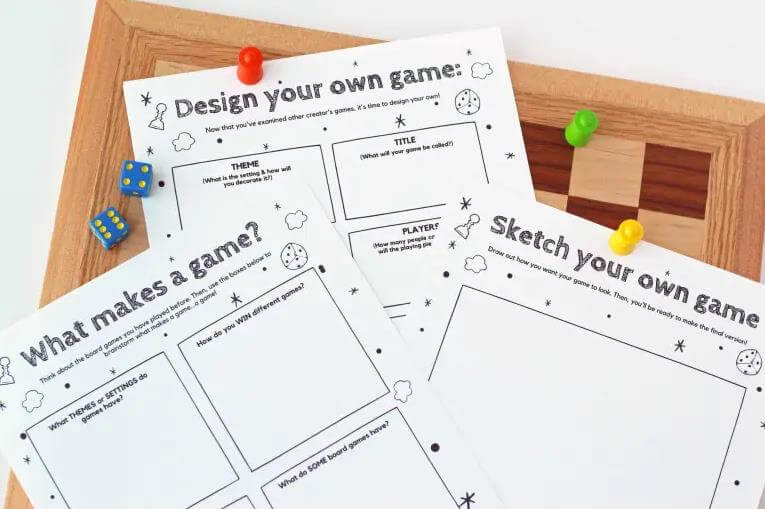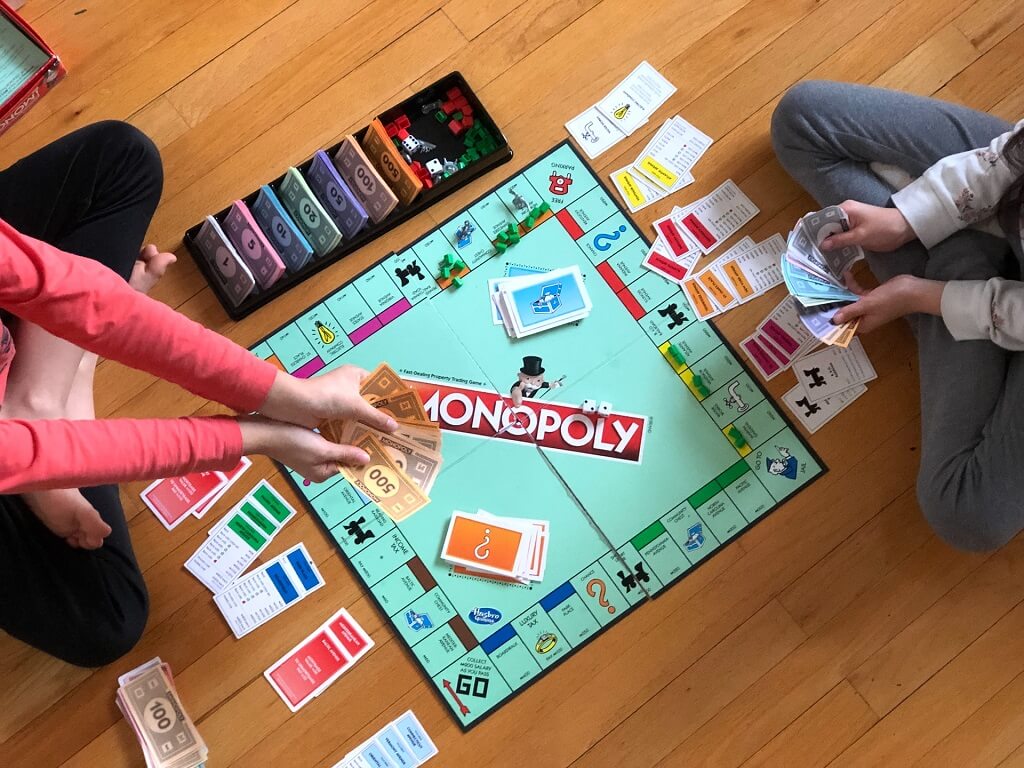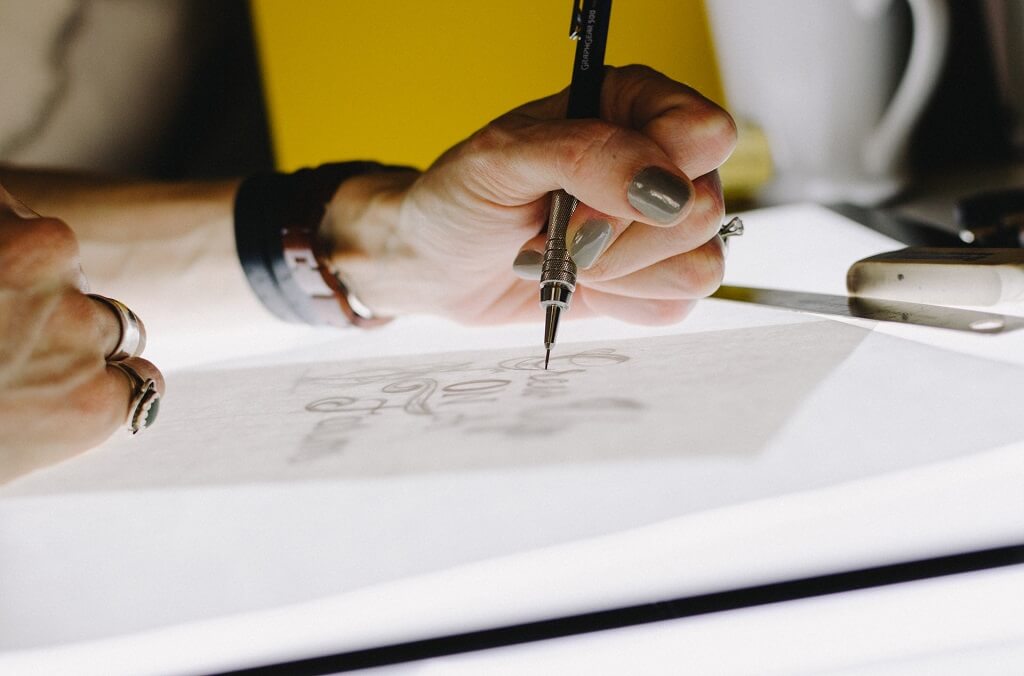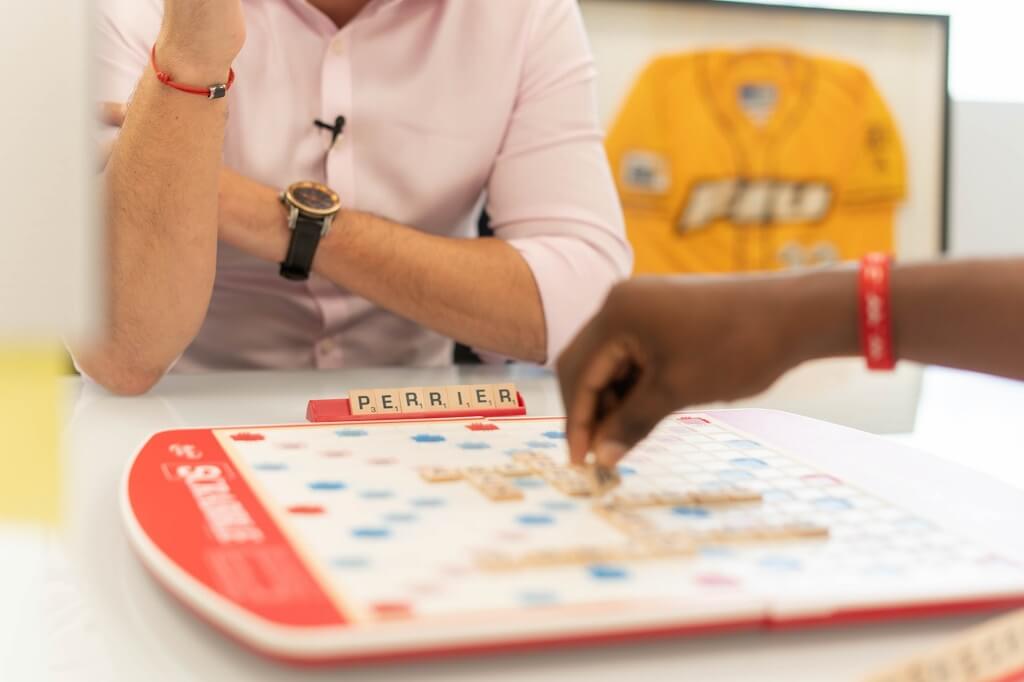We have to admit that it is quite complex to create a board game starting from zero. Yes, a real board game, from A to Z with the theme, mechanics, rules, cards, dice, pawns, miniatures… all that! In this article, I will share how our team experienced this new creation of a board game.
Table of Contents
Part I: From Idea To Prototype
In this part, I will show you how we achieve this stage from the game idea to the prototype.
Build Team
Before I started creating anything, the first thing I did was to find the person I was going to work with. Of course, you can work alone. But for this board game project, I wanted to work as a team because I found it really interesting to help each other in the reflection and to improve our skills.
It was pretty easy to find 2 teammates in our company, all three of us are at the same level (no project manager is a big mistake). At first, we argued often, which resulted in the slow progress of the project. After about a week to break in, everything is finally working.
So my advice would be, before choosing teammates for your project, you need to identify the project manager and know their working habit.
Brainstorm to Find Ideas
Brainstorming is an important method to find game ideas because it allows you to put ideas together. In the discussion with the other members of the project, it evolves. A first-person present an idea, then with the reflection and the opinion of others, this idea evolves and if the discussion is rich, this idea will no longer be the same as at the start but with the collaboration of everyone, it will have become more interesting.
We sat around a table in the showing room where there were plenty of board game samples. Everyone with ideas and glitter in the head. One of our teammates imagined a medieval world with characters and monsters. In this world, players use color cards. I have one card in hand, and he told us that my character encounters a monster and that I must use a specific type of card to defeat it.
Everyone explained his idea by acting it out. I have an idea, I take a sheet and a pencil and I show what I’m talking about. It allows others to immediately understand what I am talking about and to see immediately what is not working.
At the end of this stage, we knew the kind of game we wanted to create, the target we wanted to reach, playing time, theme, mechanics, number of players, and a fairly general idea of the rules. Although we weren’t sure if they were fully playable yet.
Write Down Game Project
This is the first moment since the beginning where we have concretized our idea by writing. This is the document that summarizes what we agreed on, the group project, and the overall framework of the game.
This document is important, any idea that does not fit in is systematically rejected. The final project will differ very little from this note of intent. Otherwise, you will still be creating your game for the next 10 years!
Therefore, in our note of intent, we have specified these elements:
- The target audience: the age of the players, for a narrative game, we preferred to target players who are no longer children.
- The game time: The storytelling experience should be interesting but not too long.
- The number of players: Not enough and nothing happens, too much, and the game is incomprehensible.
- The theme covered: We were fine with fantasy with characters that weren’t real at all and imagined leaving the work of storytelling to the players
- The goal of the game: For a narrative game the goal of the game was still too vague for us.
Obviously, not all game designers do things in the same way. But I think that if you have a project with fairly specific objectives that you don’t want them to change, then it’s better to write down this document. Because it will allow all stages to frame the project, and rectify if necessary.
Prototype
Once the note of intent is made then all that remains is to prototype. Why? But to play-test the game! Otherwise, how do you know it’s playable? You’ll have to play it a lot of times to find out.
Prototyping is easy. Just build all the elements needed for the game. The cards, the pawns, the dice, the board, … but not all in quality raw materials. If it’s too complex, drawing with a pencil is more than enough.
The prototype is ready to be played. The next step is playtesting.
Part II: Play-test Board Game
We will now be able to verify that it holds up, that it meets our objectives and that it is fun enough for our audience. Here are some tips to test your game. The more tests you do, the more corrections you will have to make and the more interesting your game will be.
Several times we have the feeling of not succeeding and want to throw everything away. You will have to stay strong! Because only going through these testing steps will assure our game is really relevant.
We went through these for the last few months and frankly speaking it was so hard! So I’m going to tell you about this experience and the lessons I learned from it.
How To Find Players To Test Your Game
At the testing stage, you have to put yourself in a certain state of mind to force yourself to test your game at the slightest opportunity. Personally, I would have kept putting off for a long time waiting for the golden opportunity. And I would never have advanced! So you have to think about game testing all the time! And take advantage of the slightest gathering to take your prototype with you and have it tested.
Enjoy Gatherings
So as soon as you’re invited to a gathering, any gathering, you should bring your prototype:
- Family celebrations
- Birthday party
- Dinner with friends
- A meeting with colleagues
- Workmates
- People at the cafe space
For my part, it was not enough to take advantage of the gatherings. People aren’t particularly aware of what I’m doing and I don’t dare bother them too much. On the friends’ side, they have very little time to go out and when they do, they prefer bars. It is therefore quite difficult to imagine doing a test that can last an hour, in a bar. So, I had to use tricks to create more opportunities.
Create Gatherings
What I had to do was create my own gatherings for the specific purpose of testing my game.
- Enjoy training and lunch break.
- In this same training, take advantage of discussing with people outside the training and give them the desire to do a test with them.
- Among their friends or family, ask them to gather a group of friends.
Go to Special Places
Where I’ve managed to do the most playtesting is at specialty venues or events, such as game conferences, and game bars. This allows experienced players to test my game. And that’s important because people who are used to playing will give me very relevant details about the game.
I really took my prototype to all these places. And it’s true that sometimes, as the prototype is still rough, I don’t dare show it.
How Is The Play-test Carried Out?
But how to actually get the board game tested? Here are the 3 steps I followed all the time :
Animate The Game
- Once the players are settled and ready to play, introduce them to the game and the rules.
- For the first tests, it is better to animate the game because the prototype is surely still very ugly at this time. The task will be much harder for the players to be immersed in the game. And having to read the rules in addition risks boring them deeply.
Take Notes
As the players play, it’s very important to take notes without interrupting the game. Obviously, it often happens that players ask for additional explanations. Especially if the rules are not written, they will surely need you, you should take note of these.
Ask Questions
At the end of the game, you can talk with the players. They will feedback on their gaming experience to you. It will help you to review your game playing, and modify it slightly.
What Do We Want To Test?
Game Features
The first thing I paid attention to is how long it took to set up the game, explain the rules, and play to the end. This lets me know if my game lasts 10 minutes or 1 hour.
I also take notes on the number of players who participated in the tests. This lets me know whether this game is more suitable for more players.
Understanding The Rules
During the test, I also note many misunderstandings. This means that rules have been poorly explained.
A misunderstanding can also come from a rule incompatible with another. This make me review the whole game and modify the rules a bit.
The Winning Strategies
I’m not going to take many notes on how the players play my board game. It’s not useful to me because I’m going to ask them when they’re done. I prefer to focus on the rules that don’t work.
At the end of the game, I will ask them how they plan to win. It is interesting to write it down because it will make it possible to know what are the winning strategies of the game. There may be something you will find them will be interesting to explore further.
It will also let me know whether they tried to cheat or not. If the possibilities of cheating are too great, I may revise the game to reduce them.
The Challenge & Fun
During the game, I will note the expressions of the players. Are they bored? Do they look like they’re having fun? I will check these with them at the end of the testing.
Then I finally ask them what they would improve in the game. It’s my favorite part. Usually, the players will inspire me with new ideas that I haven’t thought of.
How Long Does It Take?
I think it takes more than a dozen tests to start having a board game whose mechanics hold up. And of course, the more you multiply them and the more you correct your game, the better it will be. As you know, some game creators take several years to playtest and optimize their games, just to make their games evolve over time and become really interesting for publishers. By the time the game was published, it was far away from the version he originally designed.
If you have already had a game project, let me know your advice, the difficulties encountered, and anything that should not be forgotten during the playtesting phases. We are open to everything!
After our board game finishes the playtesting, we will focus on the aesthetics of the game, we will update this article with Part III.




